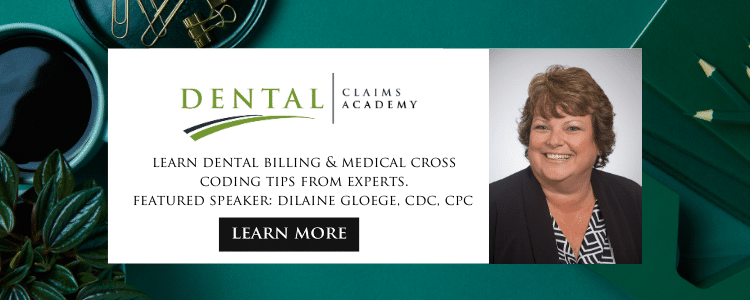How do I correctly report NPI numbers on the dental claim form?


We are here to help.
Fortunately, our team at Dental ClaimSupport is well versed in NPI numbers and accurate claim submission. Every doctor has to obtain an NPI number to practice dentistry. However, the billing entity or dental practice where the dentist works can have its own NPI number too. Confusing, right?
We aim to make this less complicated. After reviewing this article you’ll know exactly what an NPI number is and why reporting it correctly on a claim form will lead to less claim rejections. Sometimes a simple explanation of something that seems complicated, makes all the difference.
So, what is an NPI number anyway?
There are two types of NPI numbers. An NPI type 1 identifies the individual healthcare provider and an NPI type 2 identifies the billing entity (i.e., dental practice).
- NPI type 1: Identifies an individual healthcare provider, such as a doctor or dentist. In addition to being used for medical and dental claims processing it is used by pharmacies to identify the prescribing doctor.
- NPI type 2: Identifies an organization or billing entity, such as a dental clinic, practice, corporation, hospital, or dental school. An organization may be a partnership, sole proprietorship, or LLC. A myth is that a type 2 is only necessary when the organization is incorporated.
Let’s explain how these NPI numbers work and the different ways to accurately report them on claims forms.
**Note: For our scenarios in this article, we will be using a dental office called “Dental Center” and a treating dentist at “Dental Center”, is Smiley Smith, DDS.”
Where are NPI numbers reported on a 2019 ADA claim form?
NPI numbers, type 1 and 2, are reported in two different spots on the 2019 ADA claim form. They are found at the bottom left in a box labeled “billing dentist or dental entity” and the bottom right in a box labeled “treating dentist and treatment location information”.
What is the billing dentist or dental entity on an ADA claim form
The “billing dentist or dental entity” is listed in box 48 on the bottom left of the 2019 ADA dental claim form, and this indicates to the insurance payer who the payment is issued to. Basically, the billing entity information is who should receive the insurance payment.In the example above, an NPI 2 is listed in box 49, and that NPI 2 number represents “Dental Center” as an entity and NOT an individual provider. Also, you can see in the example above the name of the billing entity is “Dental Center”. Although a dentist might own this practice, the entity being paid is “Dental Center”.
What is the treating dentist on an ADA claim form
The doctor who provided the treatment listed on the dental claim form or who supervised the hygiene services is listed in Box 53 on the bottom right of the 2019 ADA Dental Claim Form. This would be your treating provider. The NPI type 1 is entered in box 54 as illustrated below.You can see in this example the name of the treating dentist is Smiley Smith, DDS. This signifies that Smiley Smith actually performed the work for this particular claim and differentiates her from other providers that may work at “Dental Center”. Again, her individual NPI 1 number is located in box 54.
How should NPI numbers be reported on the dental claim?
To make this as simple as possible, take our examples from above.
Scenario 1:
- Smiley Smith owns the practice
- Smiley Smith is the only provider
- Smiley Smith is the treating provider
In this case, Smiley Smith can report her individual NPI type 1 number in both the bottom left and bottom right portions of the claims form. She will have no issues with claim submission in terms of accurate NPIs.
Scenario 2:
- Smiley Smith owns the practice
- Smiley Smith is the only provider but has obtained a Type 2 NPI (getting ready to hire a new associate doctor)
- Smiley Smith is the treating provider
In this case, Smiley Smith can report either her NPI type 1 or the dental entity’s NPI type 2 in the bottom left of the claim form and her individual NPI type 1 in the bottom right. She will have no issues with claim submission in terms of accurate NPIs.
Scenario 3:
- Smiley Smith owns her own practice
- Smiley Smith is not the only provider, has obtained a Type 2 NPI, and hired a new associate dentist, Bracey McTooth
- Bracey McTooth is the treating provider
As you can see, Smiley Smith knew she was going to hire a new associate soon so she went ahead and obtained a type 2 NPI for her practice in scenario 2. The new doctor, Bracey McTooth, now works at the dental practice and is the treating provider.
In this scenario, the type 2 NPI will be reported in the bottom left of the claim form and Bracey McTooth’s type 1 NPI will be reported in the bottom right of the claim form because he is the treating dentist.
Why are claim rejections due to NPI numbers more prevalent now?
Now that you understand NPI numbers and how they need to be reported on claims, why do claims continue to get denied for these reasons?
The short answer is auto-adjudication of claims. With auto-adjudication, the insurance payer’s software is programmed to read each line item of the claim form and check for accuracy (i.e., matching NPI info on file).
While auto adjudication is amazing for quick claim processing, it is also intuitive, and catches inaccuracies between info reported on a claim form and info stored in an insurance database. A human could overlook an inaccuracy or two, but not a computer. Make sure your information is correct to avoid immediate denied claims and lost revenue.
Lastly, the presence of Preferred Provider Organizations (PPOs) in the dental world has been greatly affected by the need to provide accurate billing entities and treating provider information. Credentialing with a PPO must be up to date with the insurance payer, whether you are in network or just adding a provider to a practice.
Understanding how to submit claims while going through the credentialing process will limit your denials and delay in payments. Continue your dental billing educational journey by visiting our blog and reading our articles on the credentialing process and how to submit claims.

Related Posts
Dental revenue resources from Dental Claim Support
